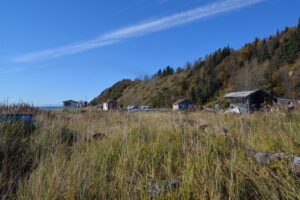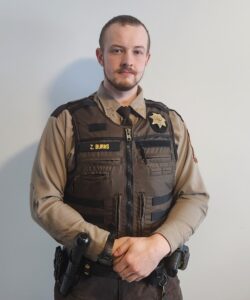
Congratulations to the village of Tyonek! Thanks to a coordinated effort among the Native Village of Tyonek (NVT), Aleutian Pribilof Islands Association (APIA) and the State of Alaska, Tyonek recently welcomed a Village Public Safety Officer (VPSO).
VPSOs are unique to Alaska. Known as “First Responders on the Last Frontier,” they provide rural fire protection, basic law enforcement, search-and-rescue coordination, emergency medical services and safety education in tribal communities throughout the state.
VPSOs are the first to arrive on the scene of safety and medical emergencies when help might otherwise be hours away, ensuring citizens in rural communities receive immediate response without delays caused by weather or distance. They typically come armed with tasers, spray and batons, but no guns.
Located approximately 40 air miles from Anchorage on a bluff overlooking the northwest shore of Cook Inlet, Tyonek is home to approximately 175 residents of primarily Alaska Native descent. It is one of seven villages in the Cook Inlet region.
According to NVT Secretary/Treasurer Janelle Baker, the last time Tyonek had a VPSO was in 2005. “There has been a need for a VPSO for quite some time,” she said. “Except in certain emergency situations, it can take days after a report is made for Alaska State Troopers to arrive in Tyonek.”
Tyonek is not alone. A 2019 Anchorage Daily News and ProPublica investigation found that one in three Alaska communities had no local police protection.
Alaska’s VPSO program is divided into 10 individual programs: APIA, Association of Village Council Presidents, Bristol Bay Native Association, Central Council Tlingit & Haida Indian Tribes of Alaska, Chugachmiut, Copper River Native Association, Kawerak Inc., Kodiak Area Native Association, Northwest Arctic Borough and Tanana Chiefs Conference. The program is paid for by the State of Alaska. Individual programs hire, employ and supervise the VPSOs, as well as manage daily operations and work with the communities receiving VPSO services.
After reaching out to the Alaska Department of Public Safety, NVT’s request for a public safety officer was put before the regional coordinators of the individual programs. APIA—a federally recognized tribal organization that serves tribes and communities in the Aleutian/Pribilof region—stepped in to help NVT hire and manage a VPSO for Tyonek.
“I had a meeting with our president to discuss the possibility of providing and managing an officer outside our region,” APIA Public Safety Coordinator Michael Nemeth said. “He was very receptive to the idea, and we decided that providing public safety in rural Alaska—be it in our region or another region—was important and the right thing to do.”

VPSO Zachary Burns arrived in Tyonek in December 2022. A Montana native, Burns is no stranger to Alaska—an Army Staff Sergeant veteran, he had previously been stationed at Fort Wainwright near Fairbanks.
“I originally heard about the VPSO Program through some Army buddies,” Burns recalled. “They were talking about these law-enforcement officers living in villages, being out there all alone. And my first thought was, that’s crazy! But the more I looked into it, the more I decided it sounded like a really interesting job. What appealed to me was getting to do not only police work, but EMT, fire protection, search and rescue—all the things the little kid in me would have dreamed of doing.”
Burns started out as the very first VPSO intern through the U.S. Department of Defense SkillBridge Program, which connects service members transitioning out of the military with paid time off to receive hands-on training in their chosen fields. He interned with APIA, shadowing VPSOs in the community of False Pass, Alaska. Training took place at the Alaska State Troopers Academy in Sitka.
The VPSO Program is selective. VPSOs undergo training that exceeds that required of tribal and village police officers and must also submit to background checks on par with Alaska State Trooper candidates. “Zach and I spent many hours talking about the program, the specific job duties and my expectations of our officers,” Nemeth said. “His drive, his desire for community and passion for the different duties the job entails made him a great candidate to interview with the NVT Tribal Council.”
Housing is often a barrier to communities looking to install a VPSO. American Rescue Act funds enabled NVT to renovate an existing home for Burns, who called his accommodations “top-notch.”
“NVT treats me very well and they’re very supportive of what I’m doing,” he said. “For me, being a VPSO is about making a positive impact. I’m ingrained with the community here; I know everyone’s name and work with them on an almost personal level. In the entire rest of the country, there’s nothing else like the VPSO Program.”
The issue of lack of law enforcement in Alaska villages has gained traction in recent years. In 2019, the U.S. Department of Justice announced $42 million in grant funding to improve public safety in rural Alaska. Last year, a bill that aims to clarify the statutory mission of VPSOs and the role of the Alaska Department of Public Safety in helping to administer the program passed unanimously through the senate. It added funding to the 2022 budget for another 10 VPSOs and included a $7-per-hour salary increase for officers.



